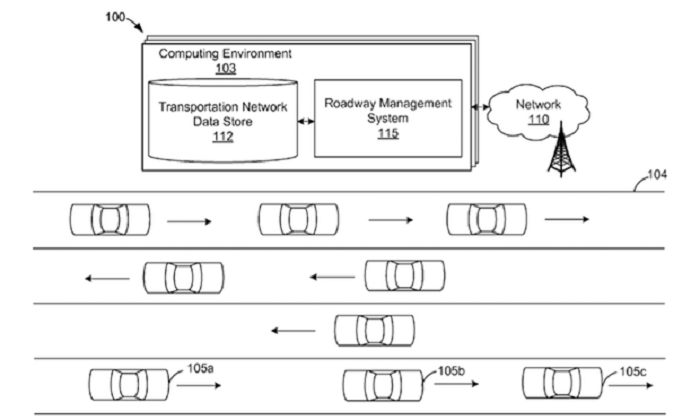Autonomous vehicles, the patent warns, “may not have information about reversible lanes when approaching a portion of a roadway that has reversible lane”, leading to a worst-case scenario of them driving headfirst into oncoming traffic.
More generally, the inability to plan for reversible lanes means cars and trucks can’t optimise their routes by getting into the correct lane well in advance, something that could otherwise prove to be one of the benefits of self-driving cars.
Amazon’s solution to the problem could have much larger ramifications than simply dealing with highway traffic in large cities. The patent proposes a centralised roadway management system that can communicate with multiple self-driving cars to exchange information and coordinate vehicle movement at a large scale.
Autonomous cars and trucks could prove to be a key part of Amazon’s in-house logistics division in the future. The patent doesn’t give much away about Amazon’s strategic goals in the self-driving sector, however, but the company has long been rumoured to be working on technology that can augment, or replace, its human drivers. Oddly, the division of Amazon leading its research into the area is its autonomous drone project, Prime Air: according to Recode, one of its co-inventors, Jim Curlander, is the technical adviser at Amazon’s Prime Air.
Amazon has slowly been taking more direct control of its delivery network over recent years, starting with the creation of Amazon Logistics in 2012 to handle local deliveries in the UK. That has expanded to a worldwide service, and has come to include a fleet of 40 planes, and goals for a cargo shipping network of similar size.
Self-driving trucks and vans would be a natural progression for the company, which is already working on automating its distribution centres thanks to its purchase of robotics firm Kiva Systems in 2012.
/The Guardian/
More about:



























-1741856732.jpg&h=120&w=187&zc=1&q=70')











-1741945056.jpg&h=120&w=187&zc=1&q=70')







